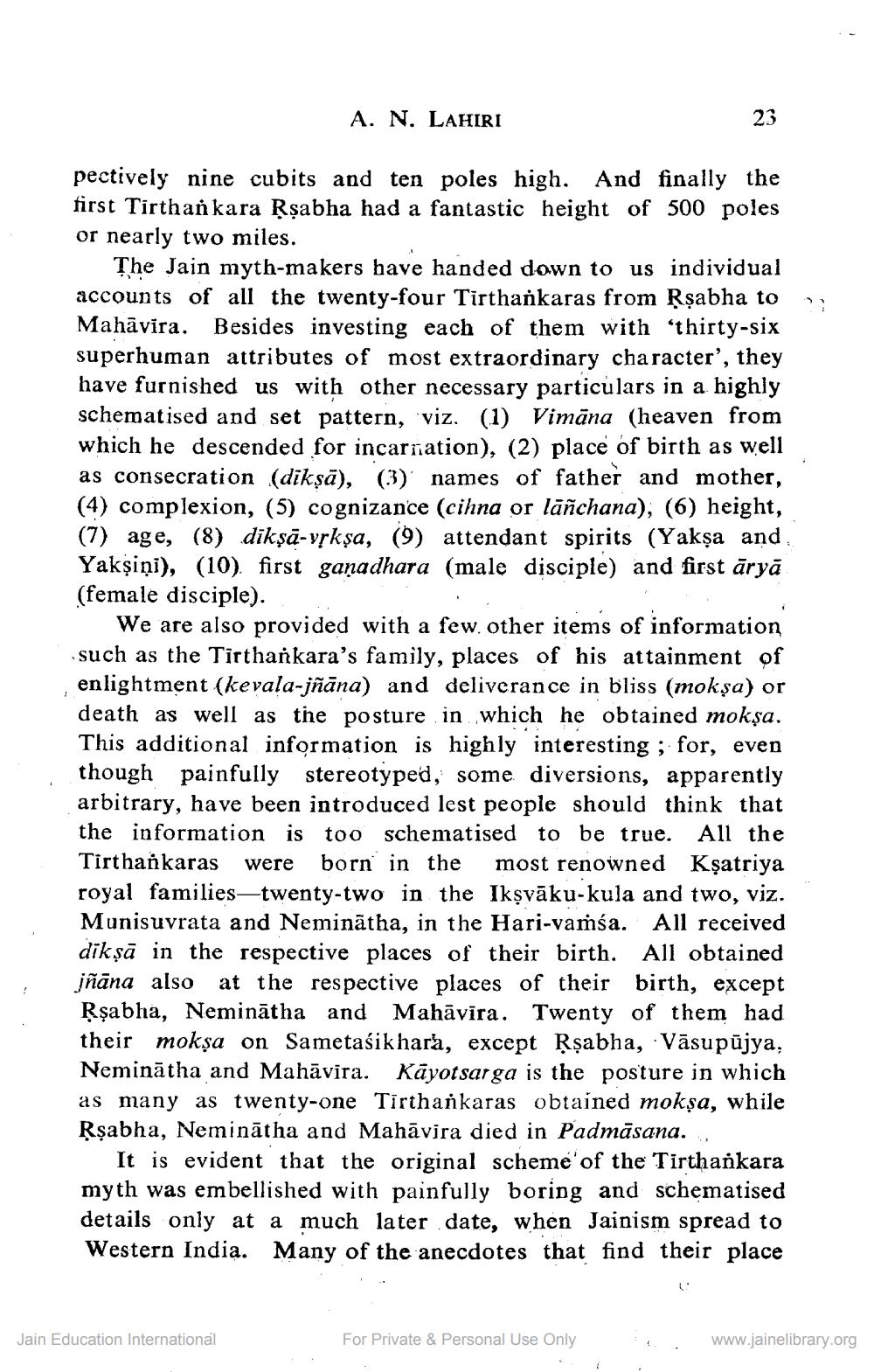________________
A. N. LAHIRI
pectively nine cubits and ten poles high. And finally the first Tirthankara Rşabha had a fantastic height of 500 poles or nearly two miles.
The Jain myth-makers have handed down to us individual accounts of all the twenty-four Tirthankaras from Rşabha to Mahāvira. Besides investing each of them with 'thirty-six superhuman attributes of most extraordinary character', they have furnished us with other necessary particulars in a highly schematised and set pattern, viz. (1) Vimāna (heaven from which he descended for incarnation), (2) place of birth as well as consecration (dikṣā), (3) names of father and mother, (4) complexion, (5) cognizance (cihna or lāñchana), (6) height, (7) age, (8) dikşā-vskșa, (9) attendant spirits (Yakșa and. Yakşiņi), (10) first ganadhara (male disciple) and first āryā (female disciple).
We are also provided with a few. other items of information such as the Tirthańkara's family, places of his attainment of enlightment (kevala-jñāna) and deliverance in bliss (mokşa) or death as well as the posture in which he obtained mokșa. This additional information is highly interesting ; for, even though painfully stereotyped, some diversions, apparently arbitrary, have been introduced lest people should think that the information is too schematised to be true. All the Tirthankaras were born in the most renowned Kşatriya royal families—twenty-two in the Ikşvāku-kula and two, viz. Munisuvrata and Neminātha, in the Hari-vamśa. All received dikṣā in the respective places of their birth. All obtained jñāna also at the respective places of their birth, except Rşabha, Neminātha and Mahāvīra. Twenty of them had their mokṣa on Sametaśikhară, except Rşabha, Vāsupujya, Neminātha and Mahāvira. Kāyotsar ga is the posture in which as many as twenty-one Tirthańkaras obtained mokşa, while Rşabha, Neminātha and Mahāvira died in Padmāsana. ,
It is evident that the original scheme of the Tirthankara myth was embellished with painfully boring and schematised details only at a much later date, when Jainism spread to Western India. Many of the anecdotes that find their place
Jain Education International
For Private & Personal Use Only
www.jainelibrary.org




